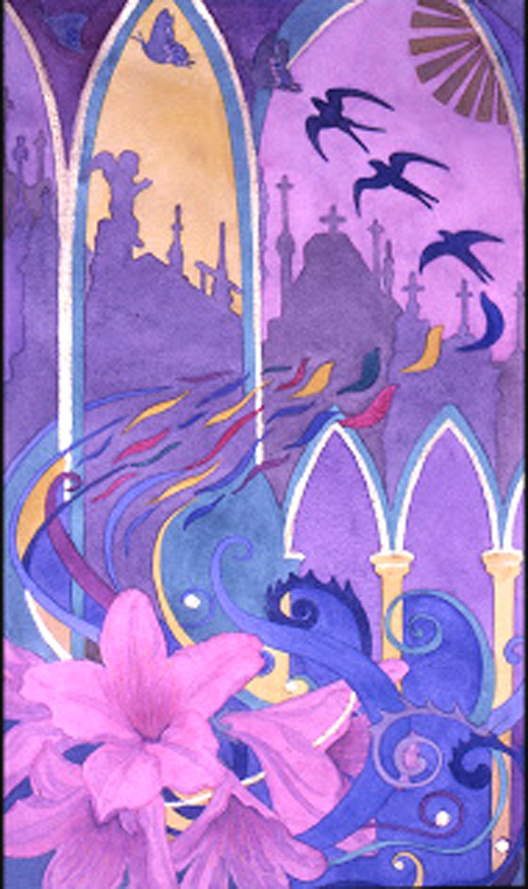Lors d'un séjour récent en Bretagne, grâce aux Amis de la Grande Vigne, j'ai eu l'occasion de vérifier de nouveau l'attrait extraordinaire de ce pays breton pour les artistes. Cette Association fait sélection d'artistes pour les faciliter pendant un mois un Atelier d'artiste situé au port de Dinan (www.musees@dinan.fr).
Pendant mon séjour, je me suis retrouvée éblouie par les beautés naturelles si diverses de la campagne, de la mer et de la vallée de la Rivière Rance. Les villages et villes offrent également une richesse d'images à peindre ou à dessiner. Néanmoins, il m'a fallu un certain temps pour m'accoutumer, pour trouver "mon oeil" artistique. Même le climat demande une adaptation pour l'aquarelle car l'humidité et les changements très brusques de temps offrent des défis lorsque l'on travaille en plein air. J'ai bientôt compris pourquoi les peintres comme Henri Rivière et Mathurin Méheut ont utilisé la gouache pour leurs études en Bretagne: la gouache sèche bien plus vite que l'aquarelle.
La Baie de Radegonde, aquarelle, Jeannine Cook artiste
Cette expérience merveilleuse de travailler, en tant qu'artiste, en Bretagne m'a fait réfléchir de nouveau à la question posée par Mme. Marthe R. Severens dans son livre, Une Artiste, un Lieu et une Époque, sur l'artiste de la Caroline du Sud, Alice Ravenel Huger Smith. Est-ce que la stimulation de visiter et de connaître d'autres paysages inconnus aide beaucoup l'artiste dans sa quête de travailler bien? Ou est-ce que ce dépaysement empêche l'artiste de créer une oeuvre approfondie jusqu'à ce que une connaissance plus ample du lieu mène à des possibilités de peindre (or dessiner) quelque chose qui ne soit simplement qu'un "joli tableau"?
En fait, je trouve, personnellement, que plus je connais un endroit, plus il m'est facile de me retrouver libérée et ainsi prête à faire une interprétation personnelle artistique du paysage. Raison de plus, alors, pour me retrouver sous peu en Bretagne!







